HOLLAND, Michigan — The Tulip Time Festival in Holland is a decades long tradition that has brought tourists from all over the country and world to view the blooming tulips every year. This year marks the 95th Tulip Time Festival in Holland, but how did it begin?
We spoke with the Tulip Time Festival's Executive Director, Gwen Auwerda, about the history of the festival and how things have changed over the years.
The inaugural Tulip Time took place in 1929, but the idea for the festival was first introduced two years earlier by a biology teacher at Holland High School. Her name was Miss Lida Rogers and she had moved to Holland from the east side of the state to work as a teacher. Rogers was an active environmentalist and wanted to find a project for her students that would benefit the city.
"She realized that a lot of the kids in her classes were of Dutch descent... And she was looking for a project that the students could get involved in in the community. And she thought, what if we tried to beautify the area and thought, well, Holland, Michigan, Holland, from the Netherlands, tulips? So what if we planted some tulips to help beautify the city," said Auwerda.

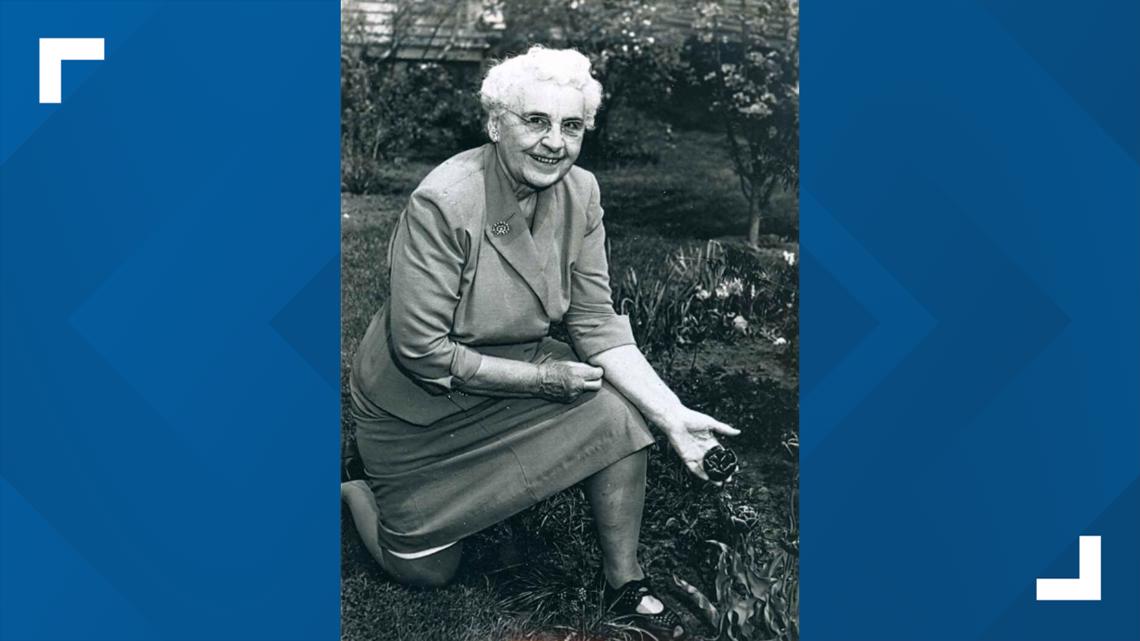
Rogers took her idea and proposed it to the Women's Literary Club in 1927 during a talk titled "Civic Beauty." After she spoke about her idea, she concluded her talk by reading a poem, “Come Down to Holland in Tulip Time.”
“Come Down to Holland in Tulip Time" by Lida Rogers
Come down to Holland in tulip-time,
in tulip time, in tulip-time;
Come down to Holland in tulip-time, (it isn’t far to go!)
And you shall wander hand-in-hand
with friends in summer’s wonderland,
Come down to Holland in tulip-time (it isn’t far to go!)
"She pitched that idea to, at that time, would be the City Council [and] to the Women's Literary Club. And it took a good year before people said, Okay, this makes sense, this would be a really great thing to do for our community," Auwerda added.
Then, in 1928, the Holland City Council and Mayor Ernest C. Brooks appropriated funds to purchase 100,000 tulip bulbs from the Netherlands. The bulbs were planted all over the city by Rogers' biology students and residents, who were able to purchase bulbs from the city for a penny each.

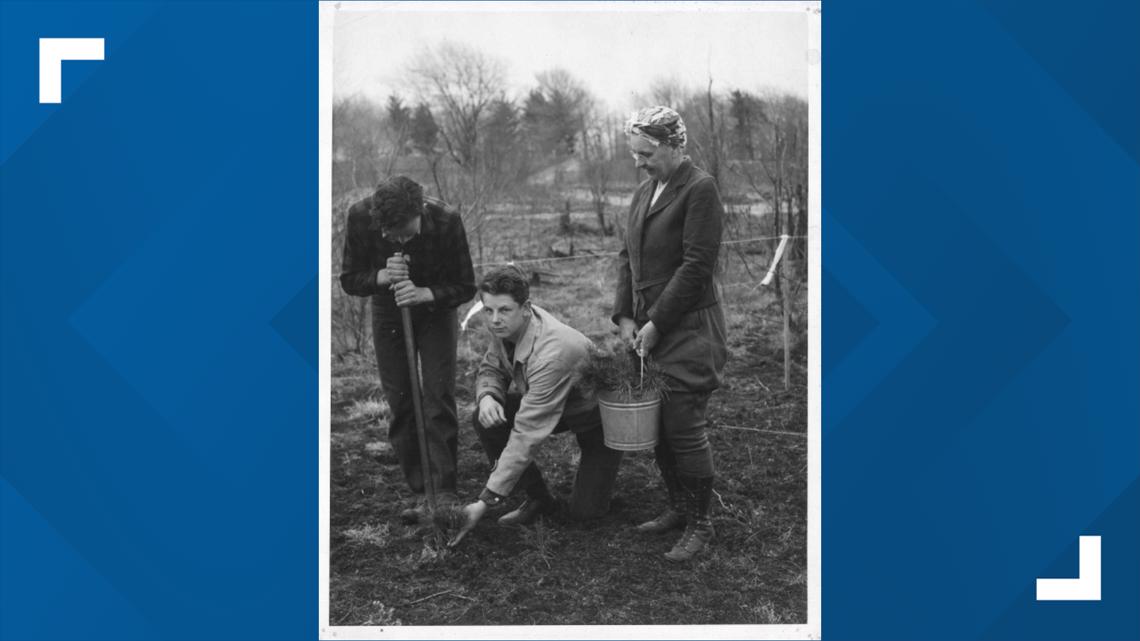
The following year, in 1929, the inaugural Tulip Time Festival took place in Downtown Holland during a week in May. Thousands of tulips bloomed throughout the city and people came from all over the state to admire the beauty.
"I kind of asked myself the question back in 1929, how did everyone know that tulips were blooming because we didn't have social media and all the outlets we have today to learn what's happening around the world. But people came. And then every year, they started adding more tulips, they started adding more pageantry," said Auwerda when asked about the first festival.
The first festival was quite a success and it was decided to continue the event annually. Mrs. Ethel Telling became the first chairman of Tulip Time and began infusing Dutch culture into the festival via costumes, wooden shoes, traditions and customs.
One of the major additions to the festival, which can still be enjoyed today, were the Dutch folk dancers, which would later be known as "Klompen Dancers." The original dancers were organized in 1933 by Ether Perry, a Holland High School gym teacher. Their debut included 12 dancers who danced to the song “Where, Oh Where, Has My Little Dog Gone?”

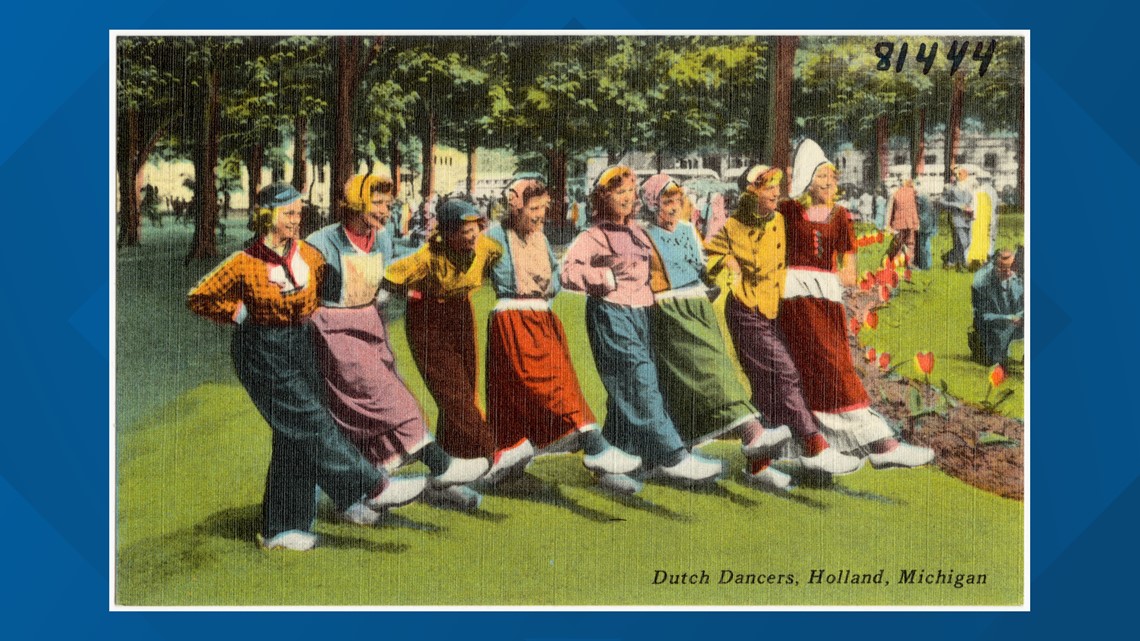
"The music was written by a local organization, a gym teacher at Holland High designed the dance, which we pretty much do the same as it was back then. And so they started dancing and a couple of the schools didn't allow it right away. So there was a small group of people that began the whole Dutch dancing process, and Klompen means wooden, wooden shoes. So that's where that Klompen dancers come from," Auwerda explained.
In 2022, there were 60 kinder dancers, 48 middle school dancers, 120 middle school dancers as well as dozens of alumni dancers. Each year, the dancers sign up in beginning of the year and learn the dance from January through the end of April, just in time to perform at the festival.
Watch Klompen Dancing from Tulip Time 2009:
"We just call them Dutch Dance today. But they dance for about 15 minutes in a folk dance with folk music. And we have, you know, a couple of 100 people that are involved in that process starting in third grade, all the way through our alumni program, which means you can dance after you're out of high school. You can join in and learn the dance if you didn't grow up here. Or if you did, then there's many people who still dance and you've got moms and grandmas and students that all dance together, it's a really a fun tradition," added Auwerda.
Also in 1933, the first Tulip Time office opened and incorporated the festival functions with the Chamber of Commerce. The festival's popularity brought with it the idea of adding more Dutch customs and traditions including parades, music and costumes.

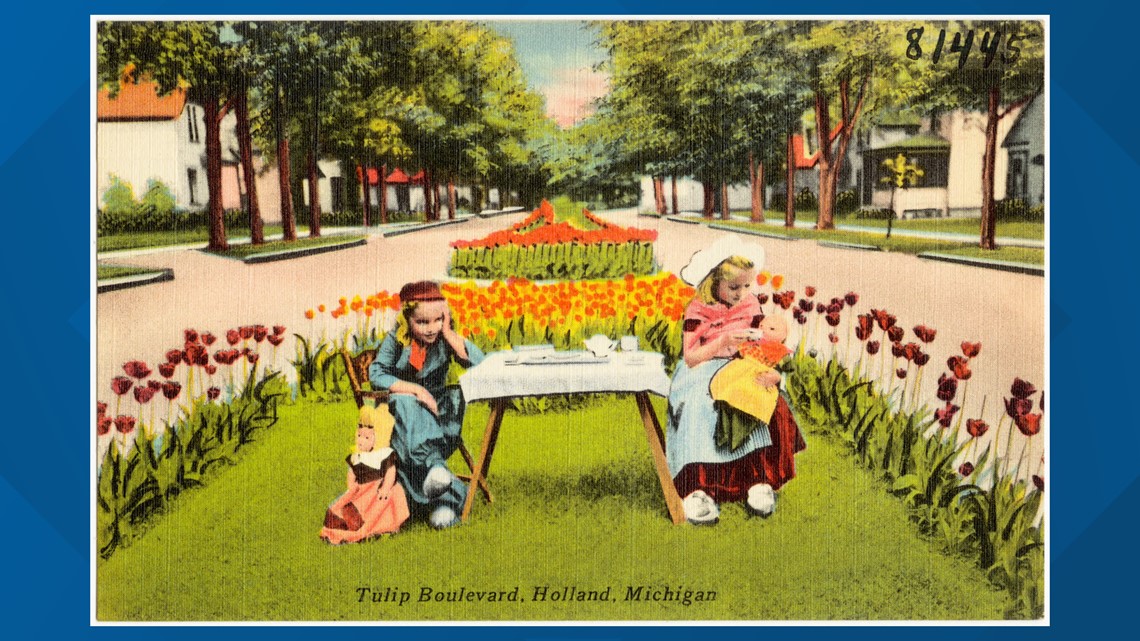
The festival continued to grow in popularity across the state and country in the lead up to World War II, which would ultimately give pause to many of the additional attractions of the festival during war time.
After the war ended, the festival was back on track with many of the Dutch customs and traditions returning. The ties between Holland and the Netherlands also grew around this time because of aid that was sent by Holland residents to the Dutch after the war. To thank the City of Holland, a special Dutch ship sailed into the Holland Harbor to deliver a barrel organ that now lives on Windmill Island.
Throughout the rest of the 20th century, the Tulip Time Festival continued to grow in popularity, with Michigan governors, celebrities and even sitting President Gerald R. Ford making appearances.
Now, in the 2020s, Tulip Time boasts 5 million tulips blooming throughout the city during the festival. That number is 50 times the original amount of tulips that were planted by Lida Rogers, her biology class and city residents in 1928.
Check out a timeline below of major milestones and moments in the festivals history.
Holland's Tulip Time Festival Timeline
1927 - Tulip Time First Suggested
The concept of Tulip Time was first introduced during a Woman's Literary Club meeting by Miss Lida Rogers. Miss Rogers was a biology teacher at Holland High School and she suggested that the City of Holland adopt the tulip as its flower because of its ties to the Netherlands. She advocated to set aside a day for a festival to showcase the cities beautiful landscapes and civic features. Miss Rogers also suggested planting tulips in every yard and planting more trees in the city.
1928 - Purchasing Tulip Bulbs
The Holland City Council appropriated funds to purchase 100,000 tulip bulbs from the Netherlands in anticipation of the first tulip related celebration the following year. The bulbs were available to Holland residents for a penny each and were planted in city parks and other areas. Rogers' biology class and residents were credited with planting the bulbs in preparation for the first Tulip Time Festival.
1929 - The Inaugural Tulip Time
The very first Tulip Time took place in 1929 during a week in May as thousands of tulips bloomed around the city for residents and tourists to enjoy. The first festival didn't have all of the cultural events and parades that it does today and focused mainly on the tulips and the beauty of the city.
1933 - Here Come The Dancers
With the Tulip Time Festival already a success, the first Tulip Time office opened, incorporating festival functions with the Chamber of Commerce. This year the Klompen Dancers were also introduced as one the first Dutch culture additions to the festival. The dance was organized by Ether Perry, a Holland high school gym teacher.
Mid 1930s - All Eyes On Holland
As popularity of the festival grew, so did the festival, adding more traditions and customs from the Netherlands. At this point in time, the Tulip Time Festival had grown to a nine-day event.

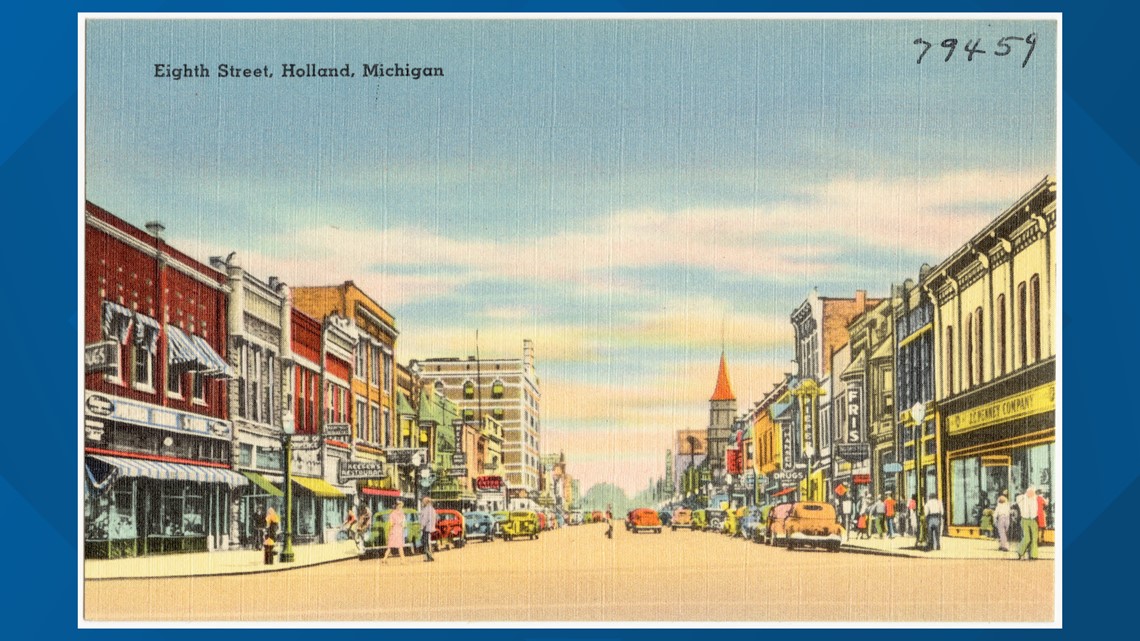
WWII - Tulip Time Festivities Take A Hiatus
After America entered World War II, the events and festivities around Tulip Time took a hiatus. During the war, the Tulip Time Festival looked more like it did in its infancy with a focus on the tulips as most of the cultural events were put on hold until the war's conclusion in 1945.
1946 - Tulip Time Returns
As the war concluded, Tulip Time returned as a four-day event with much of the cultural tapestry that it had before 1942.
1947 - Holland Celebrates 100 Years
The City of Holland was founded by Dutch Calvinists in 1847 and on this year, the city celebrated its centennial as part of the Tulip Time Festival. Also during 1947, the ties between Holland and the Netherlands were strengthened. The residents of Holland had sent aid to the Netherlands following World War II and as a thank you, a special Dutch ship sailed into Holland Harbor to deliver a barrel organ. The organ was used as part of the celebration and currently resides on Windmill Island.


Also in 1947, Michigan Gov. Kimber Sigler donned a Dutch costume and participated in the street scrubbing event before a parade. The street scrubbing and governor visits have become a tradition at the festival ever since.


1950s - 1970s - Tourists Flood Holland
Over the next 30 years, the Tulip Time Festival continued to grow with more Dutch customs and traditions added. Also during this time, package bus tours began to bring more and more tourists to the city. And in order to accommodate all of the additional tourists, the residents of Holland began to house tourists in their private homes.

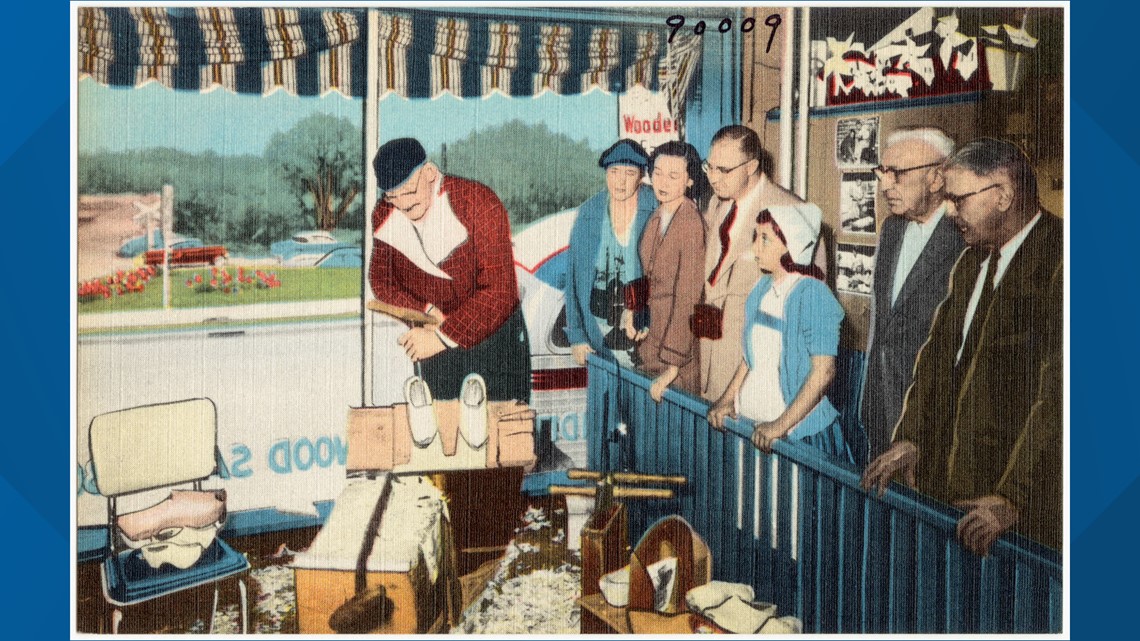
1976 - President Ford Visits Tulip Time
1976 was a big year for the Tulip Time Festival when sitting President Gerald R. Ford visited the festival. This would be the first and only time that a president visited the festival. There were other president hopefuls that visited throughout the years, including Ronald Regan and George H.W. Bush.
The City of Holland also shared its Dutch heritage with the nation at the 1976 Rose Bowl Parade. The city sent a float that featured tulips and windmills to the popular national parade.


1991 - Tulip Time Continues To Grow
The popularity of the festival continued to flourish throughout the 90s and in 1991 the festival grew to a 10-day event. Hotel accommodations in the city also continued to grow to be able to house all of the tourists that come to Holland every year.
2001 - The Festival Changes Dates
Throughout the 90s, climate change began to affect the time of year that the tulips would bloom. The Festival Board of Directors and Staff decided that they would move the festival up one week to better coincide with the blooming of the tulips.
Sources
TulipTime.com
The Holland Museum Digital Archive
Tulip Time Executive Director, Gwen Auwerda
RELATED VIDEO:
►Make it easy to keep up to date with more stories like this. Download the 13 ON YOUR SIDE app now.
Have a news tip? Email news@13onyourside.com, visit our Facebook page or Twitter. Subscribe to our YouTube channel.

